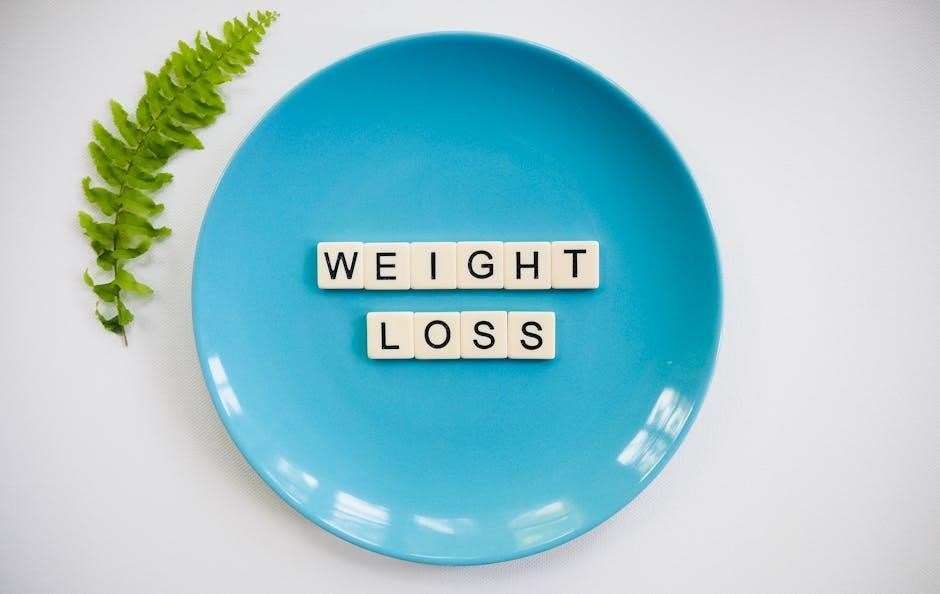Endometriosis is a chronic condition where uterine tissue grows outside the uterus, causing pain and discomfort. Diet plays a crucial role in managing symptoms by reducing inflammation and promoting healing. This 4-week plan focuses on anti-inflammatory foods to alleviate symptoms and improve well-being.
Understanding Endometriosis
Endometriosis is a chronic and often painful condition where tissue similar to the lining of the uterus grows outside the uterine cavity. This misplaced tissue can develop on the ovaries, fallopian tubes, bladder, bowel, or other pelvic structures. During menstrual cycles, this tissue thickens, breaks down, and sheds, leading to inflammation, scarring, and adhesions. Common symptoms include pelvic pain, heavy menstrual bleeding, fatigue, and infertility. The exact cause of endometriosis remains unclear, but factors such as hormonal influences, genetic predisposition, and environmental elements may contribute. While there is no cure, lifestyle changes, including dietary adjustments, can help manage symptoms and improve quality of life. A 4-week endometriosis diet plan focuses on anti-inflammatory foods, omega-3 rich options, and nutrient-dense meals to reduce inflammation and alleviate discomfort. Understanding the condition is the first step toward implementing effective strategies to combat its impact.
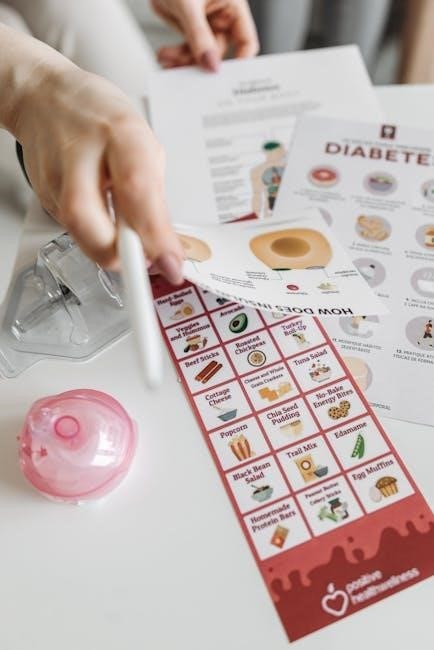
Key Foods for Managing Endometriosis
Incorporating anti-inflammatory and nutrient-rich foods is essential for managing endometriosis. Focus on leafy greens, berries, fatty fish, whole grains, and legumes. These foods help reduce inflammation, balance hormones, and support overall well-being, making them foundational to a 4-week endometriosis diet plan.
- Leafy Greens: Rich in antioxidants and fiber, they reduce inflammation.
- Berries: High in antioxidants to combat oxidative stress.
- Fatty Fish: Omega-3s help reduce inflammation and pain.
- Whole Grains: Provide sustained energy and fiber.
- Legumes: Offer protein and essential nutrients.
Anti-Inflammatory Foods
Anti-inflammatory foods are central to managing endometriosis symptoms. These foods help reduce inflammation, alleviate pain, and promote healing. Fatty fish like salmon and mackerel are rich in omega-3 fatty acids, which are potent anti-inflammatory agents. Leafy greens such as spinach and kale provide antioxidants and fiber, while berries like blueberries and raspberries are packed with anti-inflammatory properties.
Whole grains, including quinoa and brown rice, offer sustained energy and fiber, supporting a balanced diet. Legumes like lentils and chickpeas are excellent sources of protein and nutrients. Incorporating these foods into your 4-week endometriosis diet plan can help mitigate symptoms and improve overall well-being. By focusing on these nutrient-rich options, you can create a foundation for a healthier, symptom-free life.
- Fatty Fish: Salmon, mackerel, and sardines for omega-3s.
- Leafy Greens: Spinach, kale, and collards for antioxidants.
- Berries: Blueberries, raspberries, and strawberries for anti-inflammatory benefits.
- Whole Grains: Quinoa, brown rice, and oats for fiber and nutrients.
- Legumes: Lentils, chickpeas, and black beans for protein and minerals.
Foods to Avoid
Certain foods can exacerbate endometriosis symptoms by increasing inflammation and discomfort. Red meat, processed foods, and sugary items should be minimized, as they promote inflammatory responses. Refined carbohydrates, such as white bread and pasta, can lead to blood sugar spikes, worsening symptoms. Additionally, foods high in saturated fats, like fried foods, contribute to inflammation.

Some individuals may benefit from reducing or eliminating gluten and dairy, as these can trigger inflammation in sensitive individuals. Alcohol consumption should also be limited, as it can irritate the body and exacerbate pain. High-FODMAP foods, such as beans and cruciferous vegetables, may cause bloating and discomfort in some women with endometriosis.
- Red Meat: Linked to increased inflammation.
- Processed Foods: Contain pro-inflammatory additives.
- Sugary Foods: Can cause blood sugar imbalances.
- Gluten and Dairy: May trigger inflammation in some individuals.
- Alcohol: Can worsen pain and inflammation.
- High-FODMAP Foods: May contribute to bloating.
By avoiding these foods, women with endometriosis can reduce inflammation and alleviate symptoms, creating a more balanced and comfortable diet.
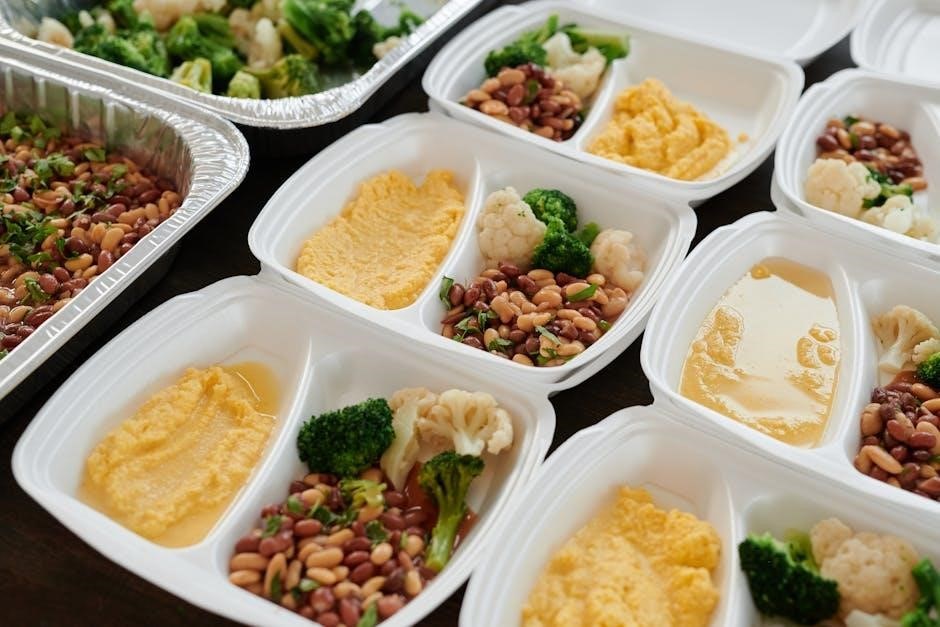
Nutritional Considerations
Nutrition plays a vital role in managing endometriosis. Focus on whole, nutrient-rich foods to reduce inflammation and support healing. Prioritize fiber and omega-3s to promote gut health and balance hormones. Maintain a balanced calorie intake to support energy levels and overall well-being.
Importance of Fiber and Omega-3s
Fiber and omega-3s are essential in managing endometriosis symptoms. Fiber aids in balancing blood sugar, improving digestion, and reducing inflammation. Omega-3s, found in fatty fish like salmon and flaxseeds, are potent anti-inflammatory agents that help alleviate pain and menstrual cramps. Incorporating these nutrients supports overall hormonal balance and reduces inflammation.
Portion Control and Calorie Intake
Portion control and mindful calorie intake are crucial for managing endometriosis symptoms. Eating nutrient-dense meals helps maintain energy levels and supports overall health without overeating. The recommended daily intake ranges from 1500 to 2200 calories, depending on individual needs. Balancing macronutrients ensures that meals are satisfying and provide sustained energy. Avoiding excessive calorie consumption helps prevent weight gain, which can exacerbate inflammation. By focusing on whole, unprocessed foods, individuals can naturally regulate their calorie intake while nourishing their bodies. This approach supports the body’s healing process and helps manage endometriosis-related discomfort effectively.

Structuring the 4-Week Plan
This 4-week plan is designed to gradually introduce anti-inflammatory foods and reduce symptom triggers. Each week focuses on specific dietary themes, ensuring a balanced and varied approach to nutrition. The structure promotes sustainable habits and symptom relief over time.
Weekly Themes
The 4-week plan is organized around weekly themes to provide structure and variety. Week 1 introduces anti-inflammatory foods, focusing on fruits, vegetables, and whole grains. Week 2 emphasizes omega-3 rich foods like fatty fish and flaxseeds to reduce inflammation. Week 3 expands meal variety with plant-based proteins and colorful dishes. Week 4 focuses on advanced meal planning, incorporating new recipes and ensuring balanced nutrition. Each theme builds on the previous week, helping to gradually adopt healthier eating habits and reduce endometriosis symptoms. The themes are designed to be flexible, allowing customization based on personal preferences and dietary needs. By following these themes, individuals can create a sustainable and enjoyable diet that supports their health journey. This structured approach ensures a smooth transition to an anti-inflammatory lifestyle, making it easier to manage endometriosis symptoms long-term.
Customizable Options
The 4-week endometriosis diet plan offers flexible customization to suit individual preferences and dietary needs. Each week’s meal plan can be tailored to accommodate vegetarian, gluten-free, or other specific requirements. For example, fish can be replaced with plant-based proteins, and dairy can be substituted with non-dairy alternatives. Additionally, portion sizes and calorie intake can be adjusted based on personal goals, whether for weight management or simply improving symptom relief. The plan encourages incorporating favorite recipes while adhering to anti-inflammatory principles. Swapping ingredients, adjusting spice levels, and exploring new flavors are all ways to keep meals engaging. This adaptability ensures the plan remains sustainable and enjoyable, helping individuals stick to their dietary goals without feeling restricted. By allowing for personalization, the plan empowers users to take ownership of their health journey and make lasting changes that align with their lifestyle and preferences. This flexibility is key to making the diet plan a long-term solution for managing endometriosis symptoms.
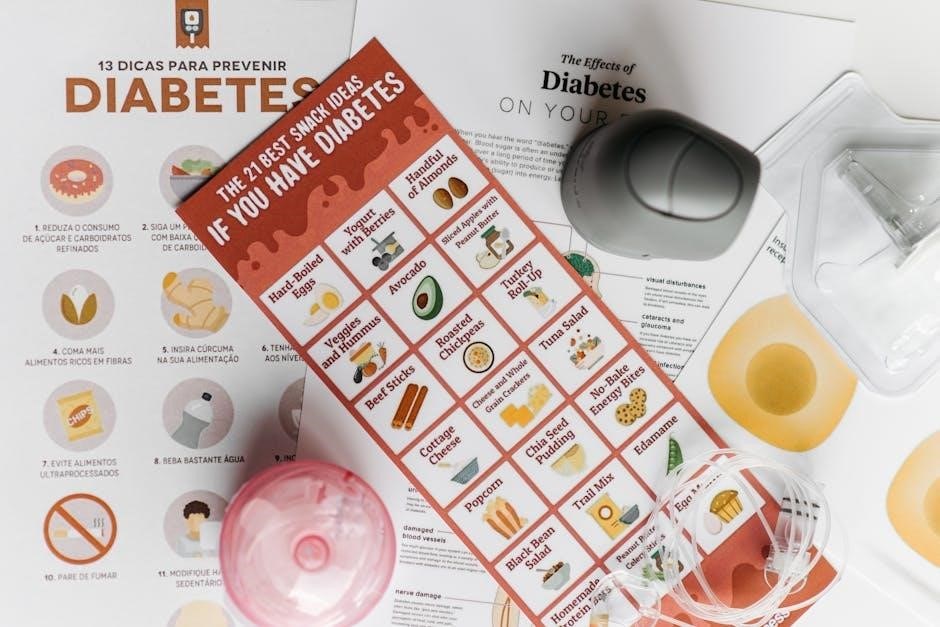
Weekly Meal Plans
This 4-week plan introduces anti-inflammatory foods, gradually incorporating omega-3 rich options and expanding meal variety. Each week builds on the last, offering balanced, nutrient-dense recipes to help manage endometriosis symptoms effectively. The structured approach ensures a smooth transition to healthier eating habits.
Week 1 focuses on introducing anti-inflammatory foods to reduce endometriosis symptoms. Start with leafy greens like spinach and kale, rich in antioxidants. Incorporate berries, citrus fruits, and fatty fish such as salmon for omega-3 benefits; Whole grains like brown rice and quinoa provide sustained energy. Avoid processed foods and red meat to minimize inflammation. Meal ideas include smoothies with turmeric and ginger, grilled fish with roasted vegetables, and hearty salads with avocado. These foods help create a foundation for healing and set the stage for further dietary changes in the following weeks.
Week 2: Incorporating Omega-3 Rich Foods
Week 2 emphasizes the inclusion of Omega-3 rich foods to further reduce inflammation and support healing. Fatty fish like salmon, mackerel, and sardines are key additions, as they are packed with EPA and DHA, which combat inflammation. Plant-based options such as flaxseeds, chia seeds, and walnuts are also incorporated for those preferring non-fish sources. Meals focus on balancing these foods with anti-inflammatory staples from Week 1. Breakfast ideas include chia pudding with berries or scrambled eggs with smoked salmon. Lunches feature salads topped with grilled fish or walnuts, while dinners highlight baked salmon or cod alongside roasted vegetables. Snacks like flaxseed crackers or a handful of walnuts keep Omega-3 intake consistent throughout the day. This week’s plan helps stabilize energy levels and reduces menstrual cramps and bloating. Portion control and calorie intake remain balanced, ensuring the diet is nourishing without being restrictive. By the end of Week 2, you’ll notice improved digestion and reduced inflammation, setting a strong foundation for the weeks ahead.
Week 3: Expanding Meal Variety
Week 3 focuses on diversifying your diet by introducing new anti-inflammatory and Omega-3 rich foods, while maintaining the foundational foods from the first two weeks. This phase encourages creativity in meal preparation to prevent boredom and ensure a wide range of nutrients. Breakfast options might include tofu scrambles with turmeric and spinach or quinoa bowls topped with avocado and walnuts. Lunches could feature lentil or vegetable stir-fries with sesame seeds, while dinners might highlight grilled tofu or vegetable curries with coconut milk. Snacks include roasted chickpeas or edamame for a protein-rich boost.
This week emphasizes the importance of exploring global flavors, such as Mediterranean, Asian, and Latin-inspired dishes, to keep meals exciting. Incorporating a variety of colors on your plate ensures a broad intake of vitamins and minerals. For example, adding purple cabbage to salads or bell peppers to stir-fries not only enhances flavor but also boosts antioxidant intake. This diversity helps maintain energy levels and supports overall well-being.
By expanding meal variety, you’ll find it easier to stick to the plan long-term. The goal is to create a sustainable routine that feels enjoyable and nourishing, rather than restrictive. This week’s focus on culinary exploration sets the stage for a lifetime of healthy, delicious eating.
Week 4: Advanced Meal Planning
Week 4 is designed to refine your meal planning skills, focusing on advanced techniques to maintain long-term success. By now, you’ve established a foundation of anti-inflammatory and nutrient-rich eating. This week emphasizes customization, ensuring meals align with your preferences, lifestyle, and dietary needs.
Advanced meal planning involves prepping meals for the entire week, incorporating leftovers creatively, and exploring more complex recipes. Breakfast might feature chia pudding with berries and flaxseeds, while lunches could include hearty salads with grilled chicken or tofu. Dinners focus on balanced, flavorful dishes like quinoa stuffed bell peppers or lentil curries with turmeric and ginger.
This week also introduces strategies for dining out or social gatherings while adhering to the plan. Learning to make healthy choices in various settings is key to sustaining progress. Additionally, you’ll explore ways to rotate ingredients to avoid repetition and maintain interest in your meals.
By the end of Week 4, you’ll have the tools to confidently create personalized meal plans that support your health and energy levels. The goal is to transition smoothly into a sustainable, long-term approach to eating for endometriosis management.
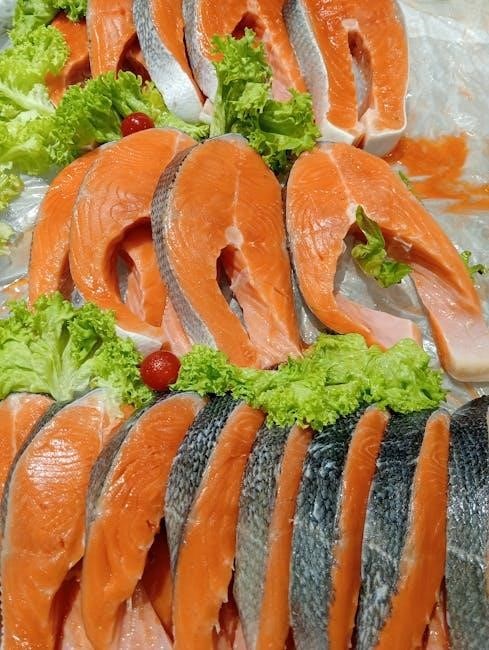
Recipes and Shopping Lists
This section provides a variety of delicious, anti-inflammatory recipes tailored for endometriosis management. Breakfast, lunch, and dinner ideas are included, along with weekly shopping lists to simplify meal preparation. Each recipe focuses on nutrient-rich ingredients to support healing and reduce inflammation.
Breakfast, Lunch, and Dinner Ideas
Start your day with nutrient-rich breakfast options like oatmeal topped with berries and walnuts, or a smoothie made with spinach, mango, and flaxseeds. For lunch, consider a grilled chicken salad with mixed greens, avocado, and olive oil dressing, or a quinoa bowl with roasted vegetables and turmeric seasoning. Dinner ideas include baked salmon with asparagus and brown rice, or lentil soup with kale and whole-grain bread. These meals are designed to reduce inflammation and promote healing while offering variety and flavor. Each recipe aligns with the anti-inflammatory approach, ensuring you stay on track with your endometriosis management plan. Customize these ideas based on your preferences and dietary needs, and refer to the shopping lists for easy preparation. With these balanced options, you can enjoy delicious, health-supportive meals throughout your 4-week journey.
Weekly Shopping Lists
Your 4-week endometriosis diet plan includes structured shopping lists to ensure you have the necessary ingredients for each meal. These lists focus on anti-inflammatory foods, fiber-rich options, and omega-3 sources. Each week’s list is tailored to the meal themes, making grocery shopping efficient and organized. For example, Week 1 emphasizes anti-inflammatory ingredients like berries, leafy greens, and fatty fish, while Week 2 highlights omega-3 rich foods such as salmon and flaxseeds. Include fresh fruits like blueberries, strawberries, and bananas, and vegetables like spinach, broccoli, and sweet potatoes. Protein sources include organic chicken, tofu, and wild-caught fish. Whole grains like quinoa, brown rice, and oats are staples, along with healthy fats like avocado, olive oil, and nuts. Herbs and spices like turmeric, ginger, and cinnamon are also essential for their anti-inflammatory properties. Weekly lists are customizable to suit your preferences and dietary needs, ensuring you stay on track while managing endometriosis symptoms effectively. This structured approach helps simplify meal prep and reduces time spent planning and shopping.

Additional Tips and Resources
Supplement your 4-week plan with meal prepping, hydration, and stress management techniques. Track symptoms and progress to tailor the plan to your needs. Utilize online resources, such as the Clue app, for cycle tracking and additional dietary guidance to enhance your journey.

Meal Prep and Time Management
Meal prepping is a cornerstone of successfully following a 4-week endometriosis diet plan. By dedicating time each week to plan and prepare meals, you can save time, reduce stress, and ensure consistency in your diet. Start by creating a weekly menu that aligns with your dietary goals and preferences. This allows you to make a grocery list tailored to the meals you’ll be preparing, avoiding last-minute takeouts or unhealthy choices.
Batch cooking is an excellent time-saving strategy. Prepare large quantities of staple items like grains, roasted vegetables, and proteins at the beginning of the week. These can be used to assemble quick, nutritious meals throughout the day. Consider portioning meals into individual containers for easy grab-and-go options, especially for busy days.
Incorporate simple, one-pot recipes or sheet pan meals that require minimal cleanup and effort. Additionally, utilize leftovers creatively to minimize food waste and save time. Staying organized with a planner or app can also help track meal prep progress and ensure you stay on course.
Remember, flexibility is key. Life can be unpredictable, so having backup options like overnight oats or smoothie ingredients can be lifesavers. By mastering meal prep and time management, you’ll find it easier to stick to your endometriosis diet plan and enjoy the benefits of improved health and well-being.
Tracking Progress
Tracking your progress is essential to understanding how the 4-week endometriosis diet plan is impacting your symptoms and overall health. Start by keeping a daily journal to record your food intake, portion sizes, and any symptoms experienced, such as pain levels, bloating, or fatigue. This will help identify patterns and correlations between specific foods and symptom flare-ups.
In addition to food tracking, monitor physical changes like energy levels, digestion, and menstrual cycle regularity. Consider using a mobile app or spreadsheet to log this information for easier review. Regular weigh-ins and measurements can also provide insight into how your body is responding to the dietary changes.
Don’t forget to track non-scale victories, such as improved mood, better sleep quality, or increased physical activity tolerance. These indicators are just as important as weight or symptom reduction. Share your progress with a healthcare provider or nutritionist to refine your plan and address any challenges.
Remember, progress may not always be linear, and some weeks may show more improvement than others. Celebrate small victories and stay consistent. By tracking your journey, you’ll gain valuable insights into what works best for your body and be empowered to continue making positive changes.
Completing the 4-week endometriosis diet plan is a significant step toward managing symptoms and improving overall well-being. Continue prioritizing anti-inflammatory foods and lifestyle changes to sustain progress. Consult with a nutritionist or healthcare provider to refine your approach and explore additional resources for long-term success.
Encouragement and Support

Managing endometriosis through diet is a journey that requires patience, persistence, and self-compassion. Celebrate small victories, like incorporating more anti-inflammatory foods or completing a week of the meal plan. Every step forward is a testament to your commitment to healing.
Remember, you’re not alone in this journey. Connecting with support groups, either online or in person, can provide emotional encouragement and practical tips. Sharing experiences with others who understand your challenges can be incredibly empowering.
Be kind to yourself during setbacks. If you miss a meal or struggle with a recipe, gently get back on track without guilt. Progress, not perfection, is the goal. Focus on how the diet makes you feel—reduced pain, more energy, or improved mental clarity—are powerful motivators to keep going.
Tracking your progress, whether through a journal or an app, can help you see improvements over time. Celebrate milestones, like completing the 4-week plan, and reward yourself with non-food treats, like a relaxing bath or a massage.
Finally, don’t hesitate to seek professional guidance. A nutritionist or healthcare provider can offer personalized advice and support, ensuring you’re on the right path. You’ve taken a brave step toward reclaiming your health—now, embrace the process and trust in your ability to thrive.
